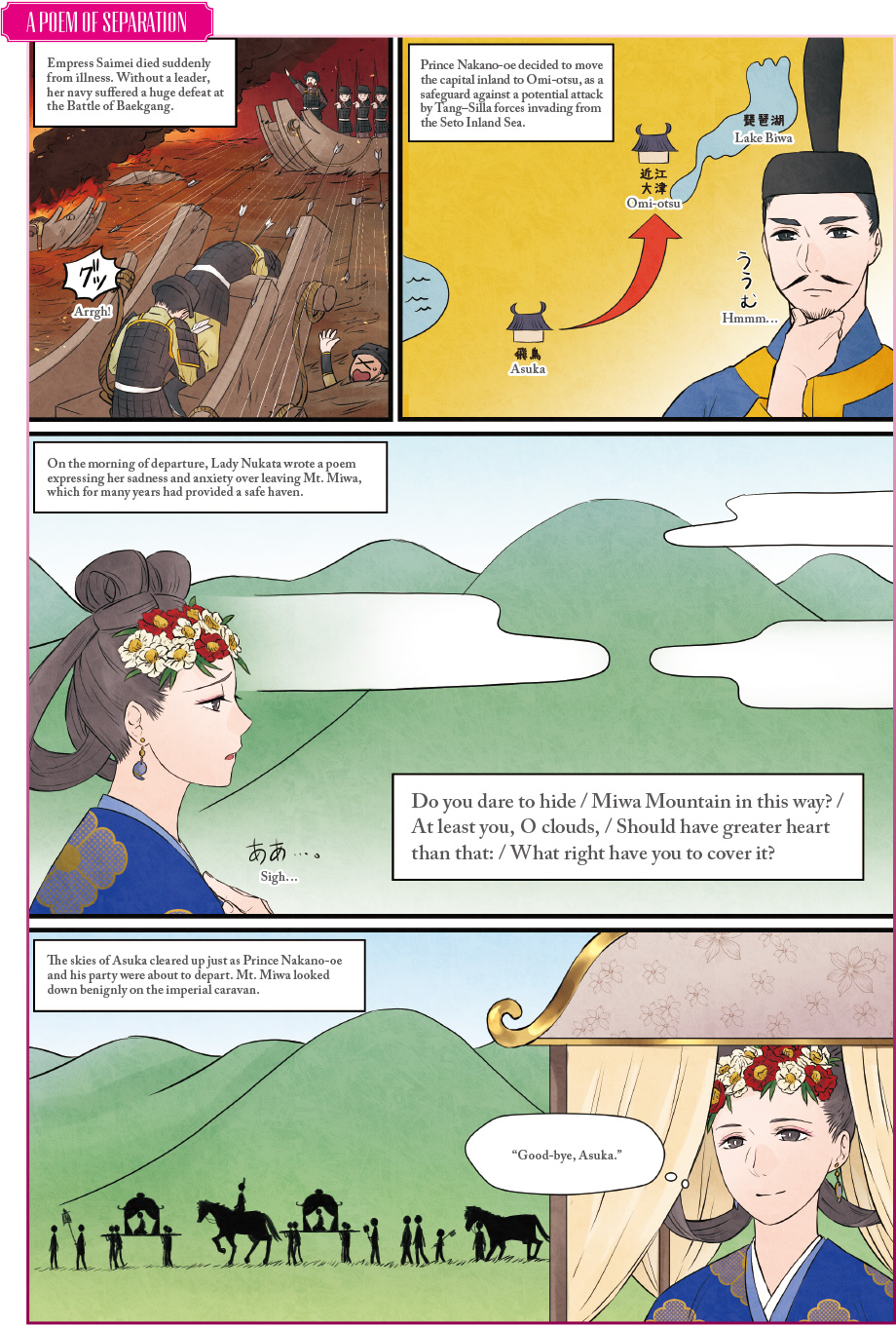Prince Nakano-oe succeeds his mother to the throne. Through Lady Nukata’s poem he conveys his hopes about moving the capital.
Relocating to Omi to cut unwanted ties
After the defeat at the Battle of Baekgang, Prince Nakano-oe worked to fortify the nation of Japan. He implemented measures such as building a frontline defensive facility called a mizuki (“water fortress”) in Dazaifu (in present-day Fukuoka Prefecture). Another defensive policy involved relocating the capital further inland from Asuka—which was close to the Seto Inland Sea—to Omi. It’s thought Nakano-oe had the added motivation of getting away from the political in-fighting of Asuka. In the year following the capital’s relocation, Nakano-oe took the throne as Emperor Tenchi. The Nihon Shoki chronicles suggest that the relocation was widely unpopular, with deliberate fires breaking out day and night. Lady Nukata’s poem may have been written in an effort to appease court officials and the public.
Poem Commentary:
Do you dare to hide / Miwa Mountain in this way? / At least you, O clouds, / Should have greater heart than that: / What right have you to cover it? * (Book 1, Poem 18)
Since ancient times, people have held Mt. Miwa to be sacred and an object of Shinto worship. In her poem, Lady Nukata objects fiercely to the clouds covering the holy mountain. Today we might think it odd to get so emotional about a natural phenomenon that’s out of our control. But in the era of Man’yo poetry, people believed that all things—both animate and inanimate—had a soul. They believed they could communicate with nature through their souls. Lady Nukata first wrote a choka (“long poem”) of repeated 5- and 7-syllable units depicting this scene. She then wrote this shorter poem as a summary of the first poem. When a tanka (“short poem”) is written based on a choka, it’s called a hanka (“verse that repeats” or envoy). The Man’yoshu contains many envoys like this.
*Translation by Edwin A. Cranston

